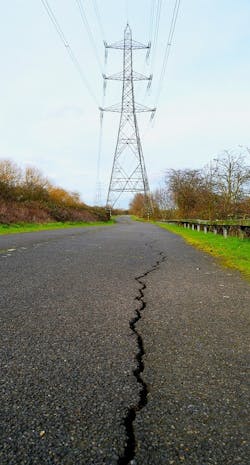Washington State Utility Readies with a Microgrid Should Transmission Lines Fail
In a crisis, it’s not just utility customers that use microgrids to get back to business. Utilities, themselves, can too. Washington State’s Snohomish County offers the latest example of a utility microgrid being developed for that purpose.
Snohomish County PUD, a sizeable public utility north of Seattle, has broken ground on a $9.5 million microgrid that it will use for emergency operations.
The utility sees the project as a way to ensure the utility will have an electrified base for operations should an earthquake or other calamity take down transmission lines, according to Neil Neroutsos, utility spokesman. Having an electrified base makes it easier for the utility to restore power to others in its 2,200 square-mile service territory.
An education center
The project also will encompass what the utility is calling the Microgrid and Clean Energy Technology Center, an education center that demonstrates solar plus storage, electric vehicle-to-grid operation, and other new technologies.
“In addition to the value this project will create in terms of grid resiliency and a new solar option for our customers, the system also will provide a range of educational opportunities for schools, the business sector, energy industry researchers and local agencies,” said Sid Logan, vice president of the local PUD commission that oversees the utility.
Expected to be complete in 2020, the utility microgrid will include a 1 MW/1 MWh battery energy storage system, 500 kW solar array, electric vehicle charging and eventually a utility office building. It will be located east of the Arlington Airport.
Burns & McDonnell will handle project engineering and design, and Mitsubishi will assist with the vehicle-to-grid elements. Others contractors include Hewitt Architects, Sazon Engineers and Interwest Construction, which is building the first phase of the project in 2018.
Snohomish County PUD expects to secure the solar contactor later this year via bid and the battery & controls contractor next year.
Washington Clean Energy Fund provided a $3.5 million grant for the utility microgrid, part of a push by the state to develop grid modernization models that can be replicated elsewhere.
Strengthening communities by creating resiliency
“This project is another step forward in modernizing our electric grid, and we’re proud to see how Snohomish PUD and its partners are building on innovations in energy storage supported by the Washington Clean Energy Fund. Together, we’re strengthening communities by creating resiliency and flexibility through these new microgrid applications,” said Brian Bonlender, director of the Washington State Department of Commerce, which manages multiple grant and loan programs offered through the state’s Clean Energy Fund.
The utility microgrid is the third PUD project using energy storage. In 2025, the utility launched the first project — two large-scale lithium ion batteries, sited at a substation near its main operations center. The second system, which came online in 2017, uses advanced vanadium flow batteries, housed in 20 shipping containers at a substation in downtown Everett.
Snohomish County PUD is the second largest publicly owned utility in the Pacific Northwest and the 12th largest in the nation in terms of customers served.
Track new about utility microgrid projects. Subscribe to the free Microgrid Knowledge newsletter.
About the Author
Elisa Wood
Editor-in-Chief
Elisa Wood is the editor and founder of EnergyChangemakers.com. She is co-founder and former editor of Microgrid Knowledge.
